
How Horn Honking Responds to Congestion Pricing
June 16, 2025
How Nintendo Plays the Economics Game
June 18, 2025Reflecting geopolitical tension, the rising price of oil has been in the headlines.
Below, Yahoo Finance shows us oil’s recent ascent on the New York Mercantile Exchange:
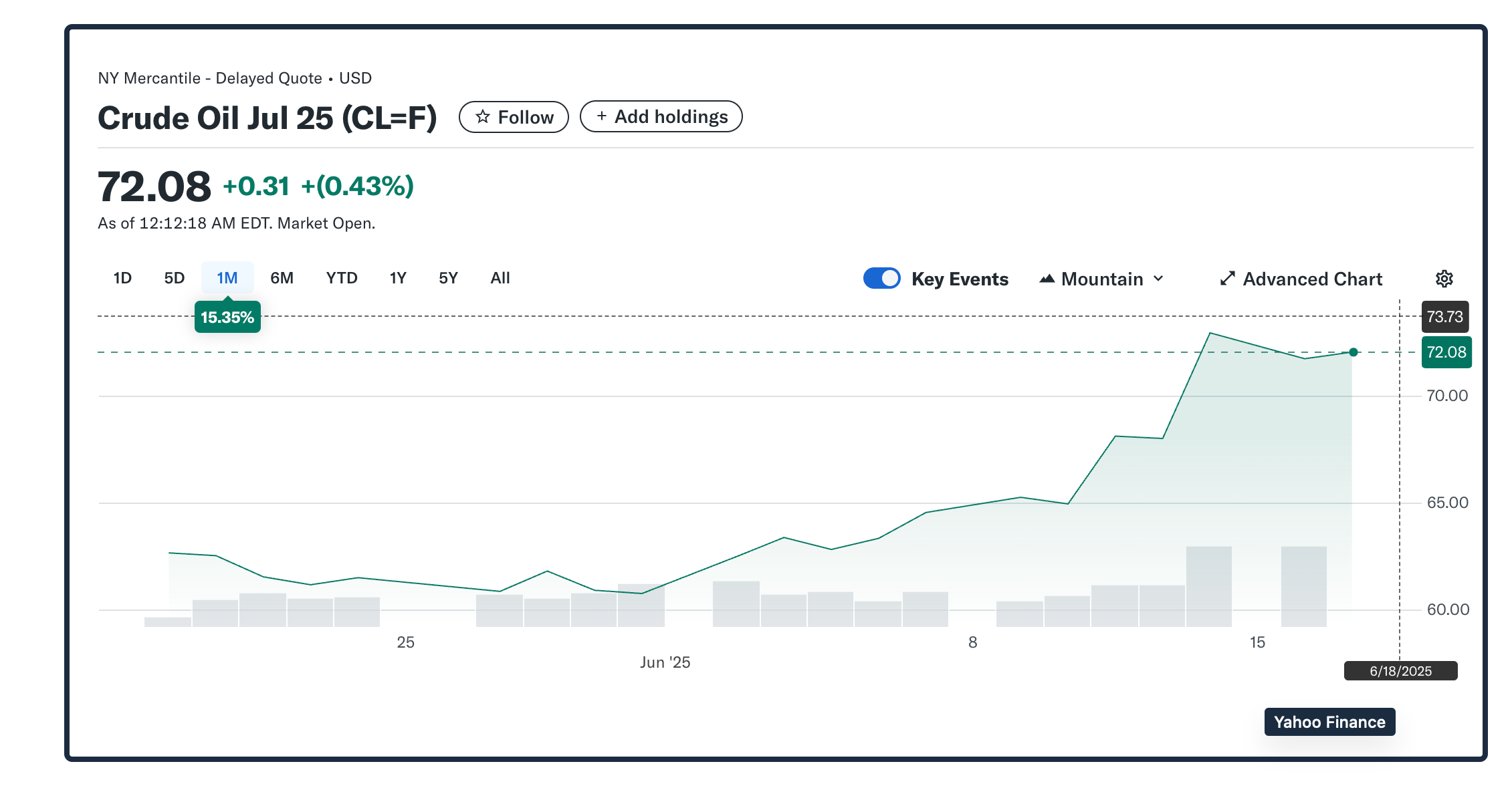
Oil though, represents just one slice of the U.S. energy production pie.
U.S. Energy Production
During 2024, the U.S. surpassed its 2023 high. While natural gas and crude oil production totals remained close to where they had been in 2023, renewables soared with biofuels up 6%, wind rising by 8%, and solar, 25%. Meanwhile, coal continued a plunge that began in 2010.
You can see that even with record increases, renewables remained a sliver of total production:
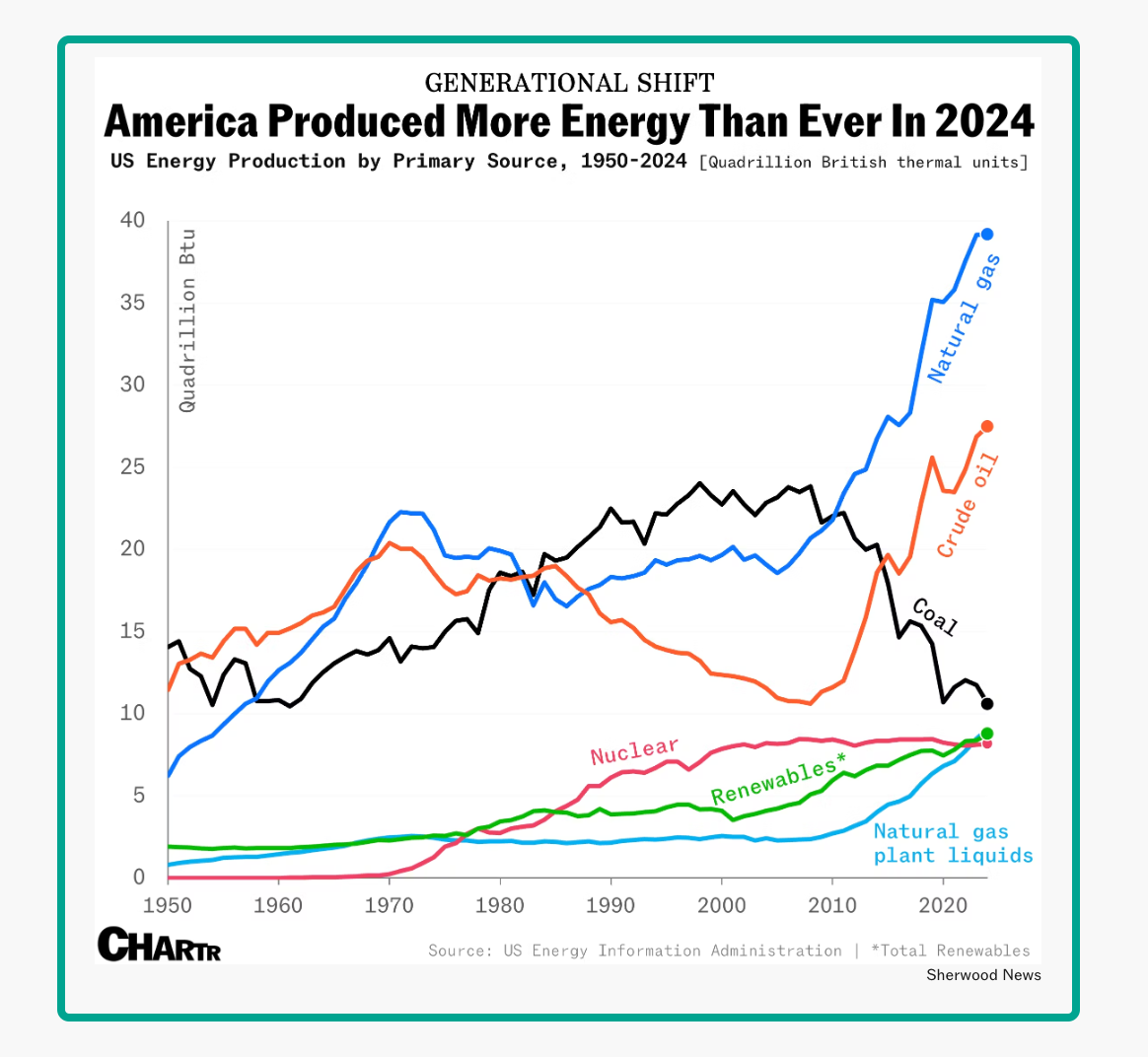
Next, we can ask where all of the energy goes. The Lawrence Livermore Laboratory gave us some answers in its most recent flowchart from 2023. Showing where our energy comes from and where it goes, the chart is a handy snapshot of how we power our homes, businesses, and vehicles:
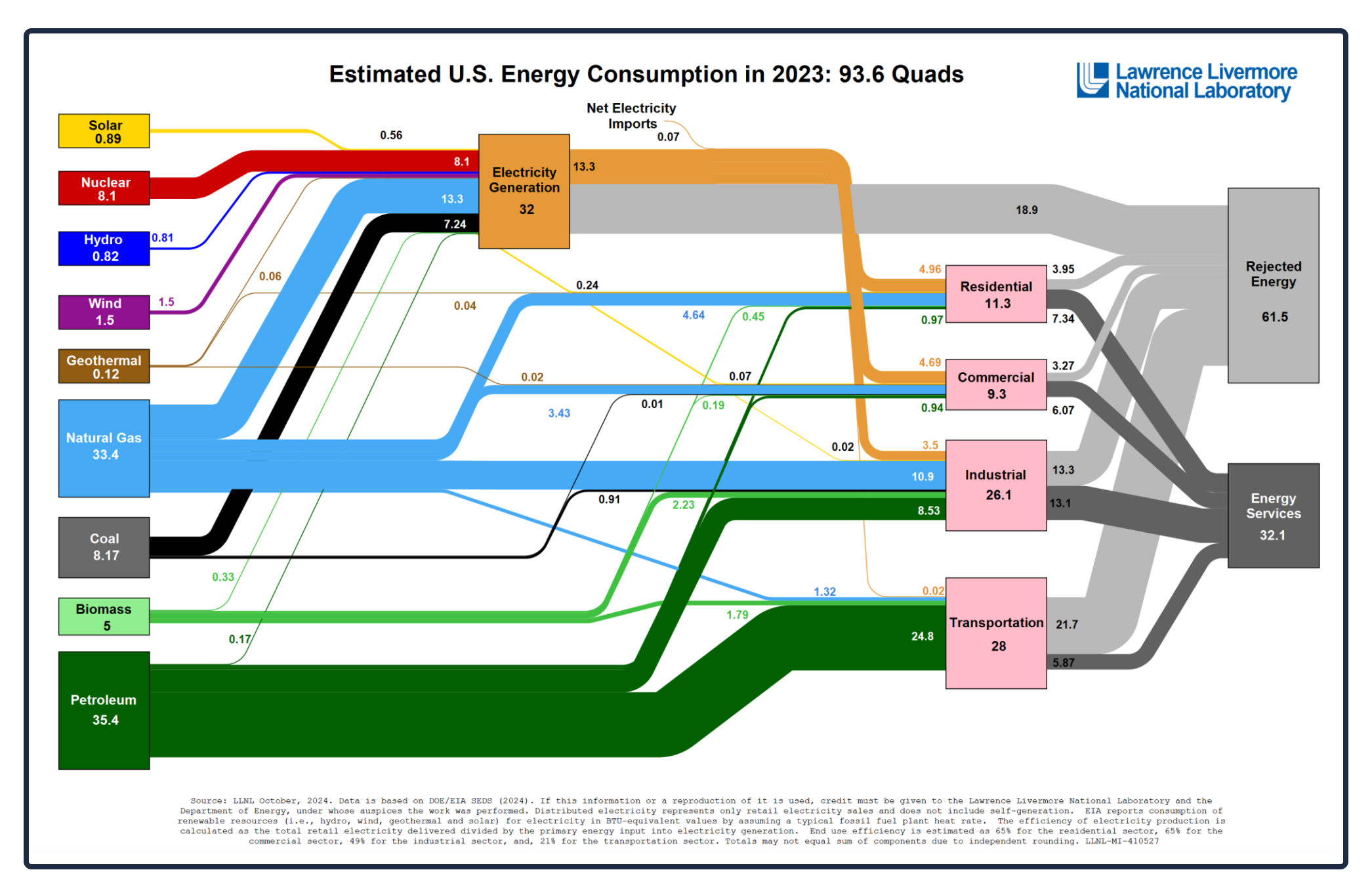
We use and waste a lot of energy. One quad–a quadrillion Btus–is the energy equivalent of approximately eight billion gallons of gasoline. And, we consumed close to a whopping 93.6 quads in 2023.
We can see where the totals come from by following an energy pathway. Starting at the natural gas rectangle, please move upward and to the right on the blue line where 13.3 quads of natural gas go to generating electricity. Then, after the rust-colored electricity line arrives in the residential box, we use a tiny bit of those BTUs (100) to toast a bagel.
On the lefthand side, we can group our energy resources as renewable, nuclear, and fossil. Then, on the far right, rejected and services refer primarily to efficiency. Your car’s gasoline drives the wheels as an “energy service” and comes out of your car’s exhaust as “rejected energy.”
In this 7 3/4-minute video, they do a good job of describing the flowchart:
Our Bottom Line: World Energy Consumption
Contrary to U.S. trends, coal remains a major source of global energy:
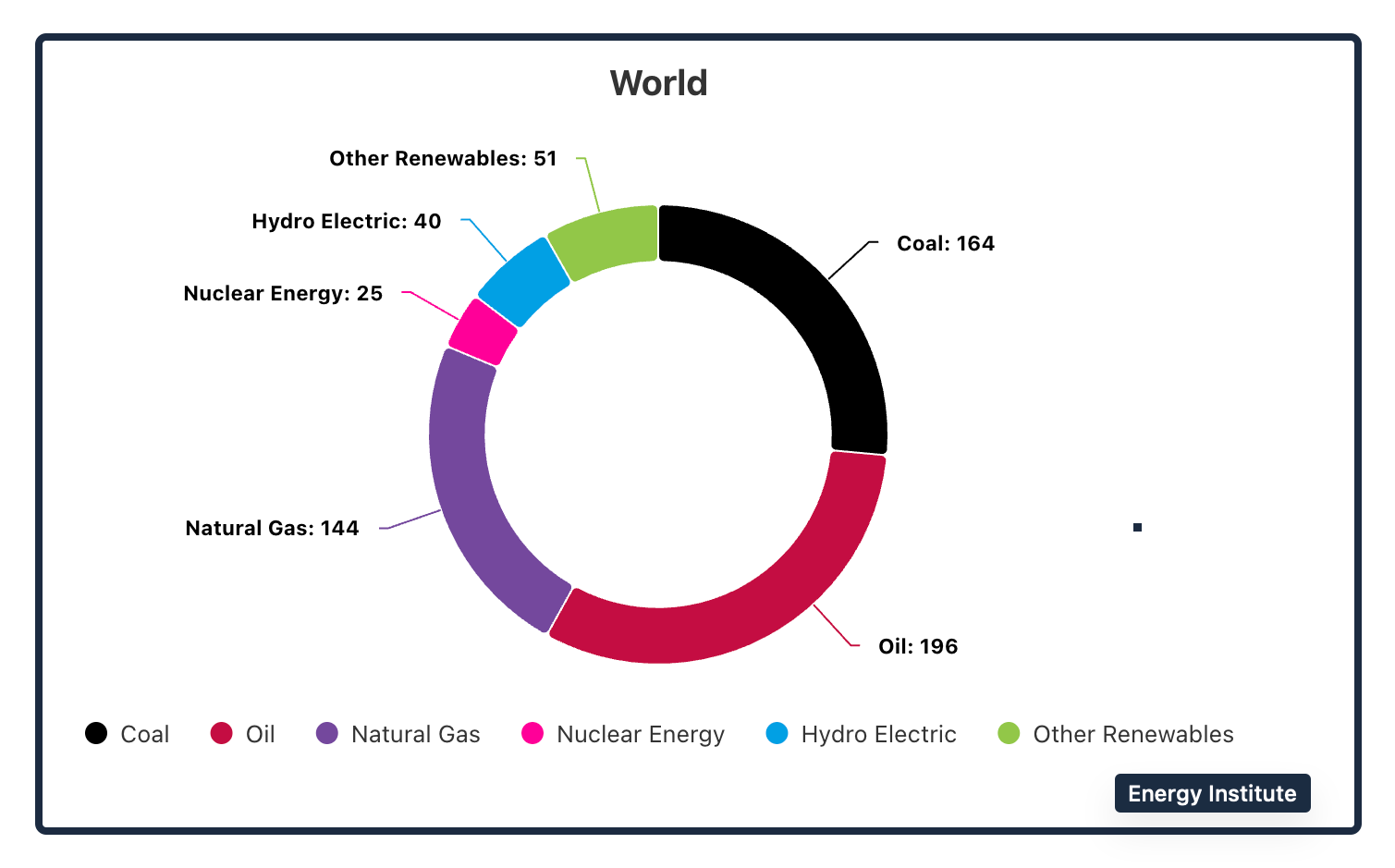
But you might most enjoy (as did I) comparing regional consumption:
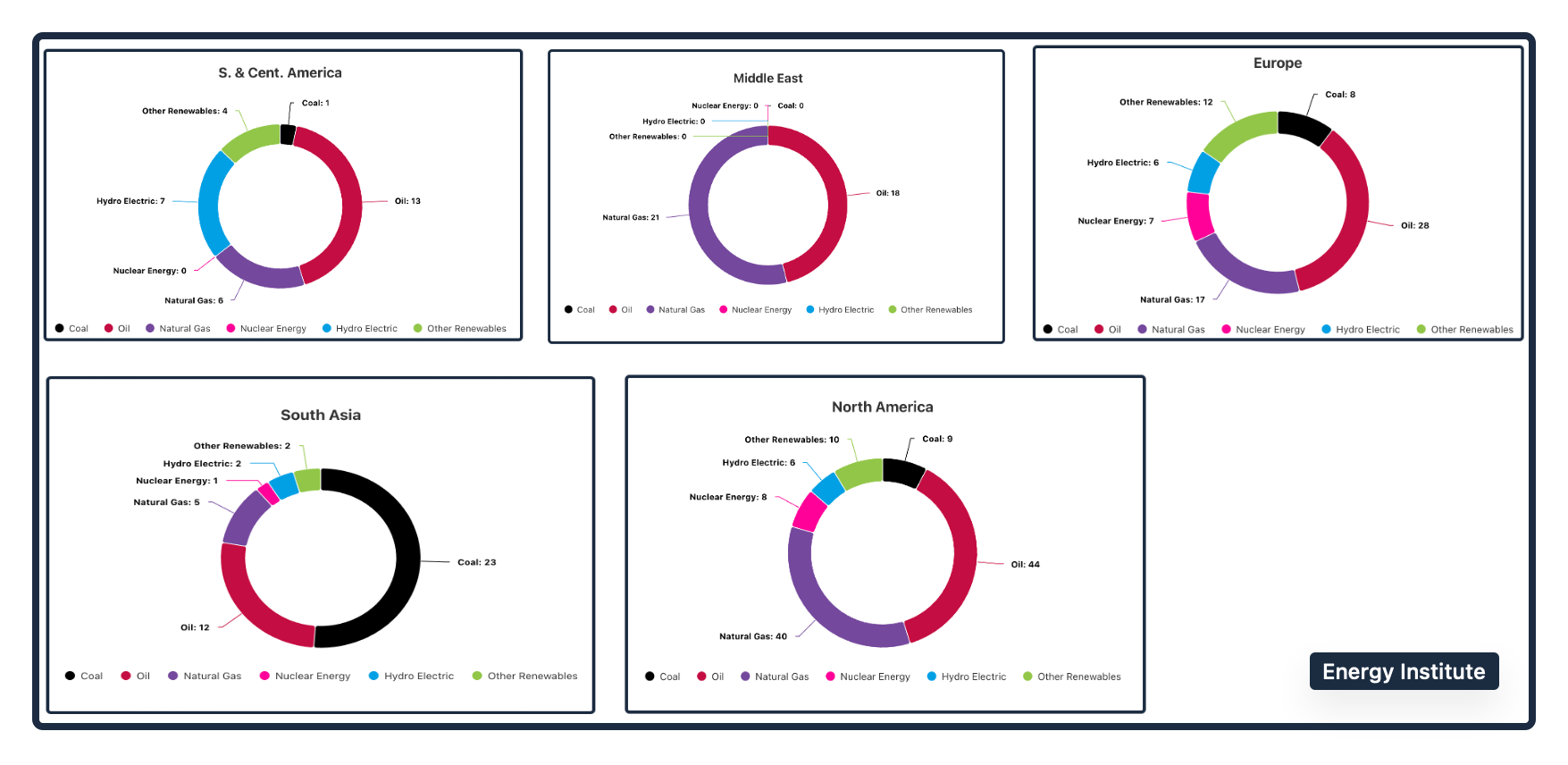
My sources and more: Always interesting, Sherwood News and Reuters started my search for energy production. Then also, it was time to return to Livermore statistics and this past econlife post. However, the energy institute was my newest and most valuable discovery.
Please note that several of today’s sentences were in our previous econlife posts.
![econlifelogotrademarkedwebsitelogo[1]](/wp-content/uploads/2024/05/econlifelogotrademarkedwebsitelogo1.png#100878)




